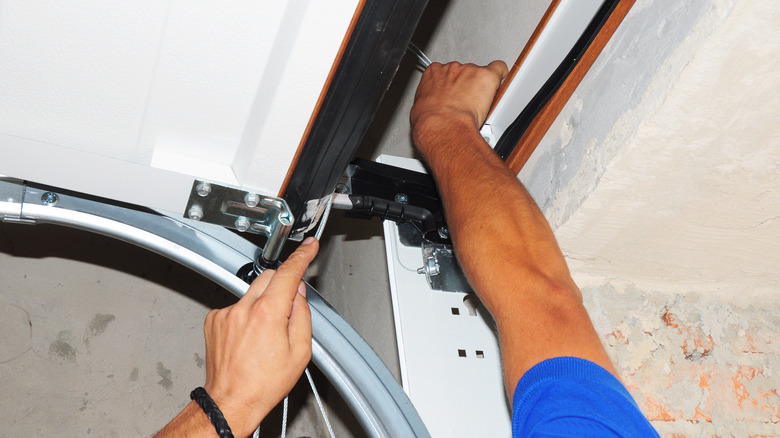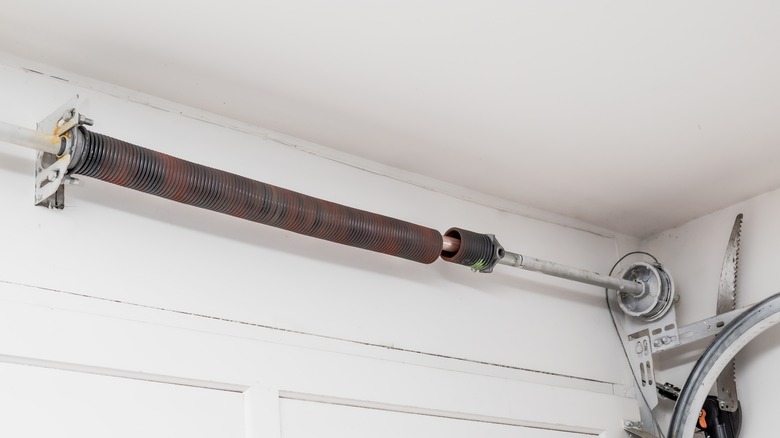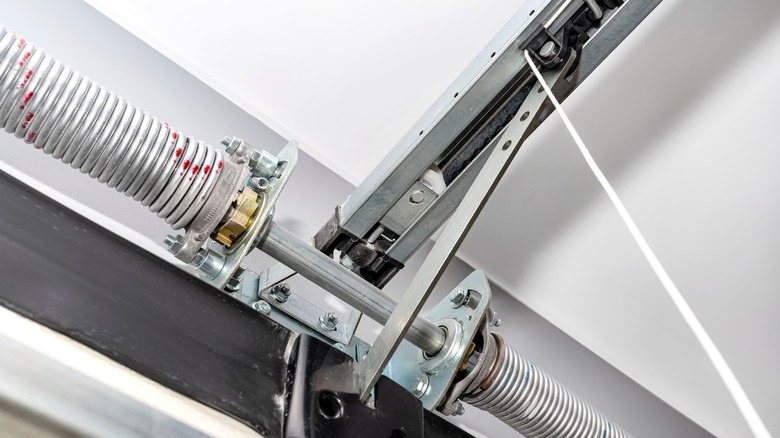Is Replacing Garage Door Springs A Good DIY Project? Here's What We Know
When you are having a problem with your garage door, it can be tough to diagnose the problem yourself and get your garage door back on track. After a bit of sleuthing, you may narrow the list of potential problems to the tension springs. Is this a project that you should try to tackle on your own? Some people may want to try to save the cost of a garage door repair job from a professional, but it's important to understand that replacing them can have some danger associated with it.
Before deciding whether to do this as a DIY job, you need to understand whether you have torsion or extension springs. The torsion spring typically sits above the garage door. It winds and unwinds to support the weight of the garage door, which can be up to 300 pounds. The torsion spring winds tightly to allow the garage door to lower to the ground. As the torsion spring unwinds, the force generated helps to lift the door. The torsion spring is less dangerous if it breaks as it winds because it cannot come loose from the shaft and fly away.
The extension springs, meanwhile, attach to a cable that pulls the garage door open and closed as the coils contract and retract. They are often along the sides of the door. They can be extremely dangerous if they break because they fly outward and could strike you with quite a bit of force.
Can you fix a garage door torsion spring yourself?
You can fix the torsion spring on the garage door yourself, but you must exercise a lot of caution. Even though it will not completely come loose from the shaft, it's still under a lot of tension that could lead to cuts and other injuries if it lets go suddenly while you are working on it. A failing torsion spring could cause the garage door to fall quickly, potentially hitting and injuring you. Additionally, if you have an unusual type of torsion spring design on your garage door, following directions you find on the Internet or that come with the replacement could cause you to install it incorrectly, leading to a dangerous situation later.
If you still want to DIY the torsion spring replacement yourself, you need to measure the inner diameter, length, and wire diameter of the torsion spring to find the proper replacement. You also need to understand which way it winds when tightening to order the correct replacement part.
To release the old torsion springs, you need to use socket wrenches, a winding bar, and locking pliers. You then have to disconnect the cables and set screws to be able to remove the old parts. Once you attach the new torsion spring, you have to be able to use the winding bar to apply just the right amount of tension. These steps can be challenging, which is why many people hire a pro.
Is garage door extension spring replacement a good DIY job?
Typically, the extension spring system on a garage door is easier to replace than the torsion springs because you can take the tension out of the extension springs by opening the garage door. The danger with this type of design occurs if they suddenly break loose and fly outward when you are opening or closing the garage door.
One challenge with replacing the extension springs on the garage door is that you must select the right type to match the design of your garage door. You need to take a number of measurements, including the height and weight of the garage door. If you have the old extension springs, you can look at the color painted on the end of the coil, which signifies its weight limit. Just purchase a new product that has the same color. You also should match the design of the ends of the coils from the old ones to the new ones.
Once you have the right replacement extension springs in hand, you can then do the installation. You must disconnect and remove the lift cable and safety cable that run through the extension springs. Pay attention to the connection method for the cables, as you'll want to reattach them in the same manner after making the replacement. If you don't feel comfortable with any part of this process, hire a professional to ensure the job goes smoothly and safely.


